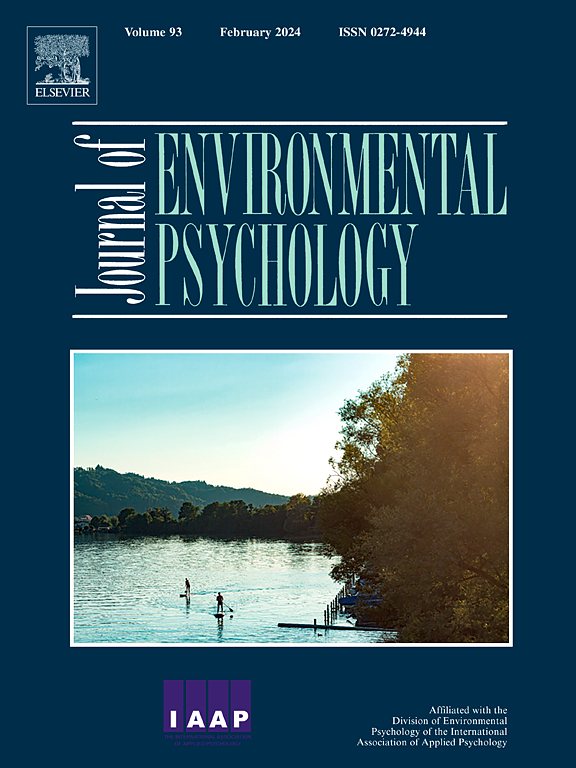自然灾害幸存者中常见精神障碍的患病率——暴露与未暴露样本的荟萃分析比较
IF 7
1区 心理学
Q1 ENVIRONMENTAL STUDIES
引用次数: 0
摘要
以前的研究报告说,在受自然灾害影响的人群中,常见精神障碍的患病率很高。然而,在很大程度上仍然不清楚,这种流行程度比具有类似背景但未遭受自然灾害的人口的流行程度高到什么程度。我们进行了一项荟萃分析,比较自然灾害幸存者与未暴露对照组的精神障碍患病率和症状严重程度。我们确定了33项研究的41份报告,涉及30,508名参与者,并进行了随机效应荟萃分析。暴露于危险环境(相对于未暴露于危险环境)与事件发生后一年内当前创伤后应激障碍(PTSD)的几率显著增加相关(OR = 4.46, 95% CI 2.15;9.26;n = 8,808)和长期(平均:灾后12年,OR = 1.84, 95% CI 1.32;2.57;n = 2199)。在发生危险的平均四年后,目前诊断为抑郁症的可能性增加(OR, 3.38, 95% CI 2.18;5.26;n = 5207)。三级模型显示,与非暴露组相比,危险暴露组的创伤后应激障碍和抑郁症状严重程度显著高于非暴露组,具有中等到较大的影响。关于其他精神障碍的发现受到现有研究数量有限的限制。我们的研究结果表明,与没有暴露在自然灾害中的人相比,暴露在自然灾害中的人患创伤后应激障碍和抑郁症的长期风险显著增加。研究结果强调了将有效预防和治疗作为减缓气候变化战略的一部分的必要性。本文章由计算机程序翻译,如有差异,请以英文原文为准。
Prevalence of common mental disorders in survivors of natural hazards – a meta-analytic comparison of exposed vs. non-exposed samples
Previous studies have reported high prevalence of common mental disorders in populations affected by natural hazards. Yet, it remains largely unknown to what extent the prevalence exceeds that of populations with similar backgrounds that have not been exposed to natural hazards. We conducted a meta-analysis comparing prevalence and symptom severity of mental disorders in survivors of natural hazards compared to non-exposed controls. We identified 41 reports of 33 studies with 30,508 participants and conducted random-effects meta-analyses. Being hazard-exposed (vs. non-exposed) was associated with significantly increased odds for current posttraumatic stress disorder (PTSD) in the first year after the event (OR = 4.46, 95 % CI 2.15; 9.26; n = 8,808) and in the long-term (mean: 12 years post-hazard, OR = 1.84, 95 % CI 1.32; 2.57; n = 2,199). There was an increased likelihood of current depression diagnosis on average four years following a hazard (OR, 3.38, 95 % CI 2.18; 5.26; n = 5,207). Three-level models showed significantly higher symptom severity of PTSD and depression in the hazard-exposed compared to the non-exposed group with moderate-to-large effects. Findings on other mental disorders were constrained by the limited number of available studies. Our results suggest that being exposed to natural hazards is associated with a considerable increased long-term risk of PTSD and depression relative to non-exposure. The findings highlight the need for both effective prevention and treatment as part of climate change mitigation strategies.
求助全文
通过发布文献求助,成功后即可免费获取论文全文。
去求助
来源期刊

Journal of Environmental Psychology
Multiple-
CiteScore
10.60
自引率
8.70%
发文量
140
审稿时长
62 days
期刊介绍:
The Journal of Environmental Psychology is the premier journal in the field, serving individuals in a wide range of disciplines who have an interest in the scientific study of the transactions and interrelationships between people and their surroundings (including built, social, natural and virtual environments, the use and abuse of nature and natural resources, and sustainability-related behavior). The journal publishes internationally contributed empirical studies and reviews of research on these topics that advance new insights. As an important forum for the field, the journal publishes some of the most influential papers in the discipline that reflect the scientific development of environmental psychology. Contributions on theoretical, methodological, and practical aspects of all human-environment interactions are welcome, along with innovative or interdisciplinary approaches that have a psychological emphasis. Research areas include: •Psychological and behavioral aspects of people and nature •Cognitive mapping, spatial cognition and wayfinding •Ecological consequences of human actions •Theories of place, place attachment, and place identity •Environmental risks and hazards: perception, behavior, and management •Perception and evaluation of buildings and natural landscapes •Effects of physical and natural settings on human cognition and health •Theories of proenvironmental behavior, norms, attitudes, and personality •Psychology of sustainability and climate change •Psychological aspects of resource management and crises •Social use of space: crowding, privacy, territoriality, personal space •Design of, and experiences related to, the physical aspects of workplaces, schools, residences, public buildings and public space
 求助内容:
求助内容: 应助结果提醒方式:
应助结果提醒方式:


